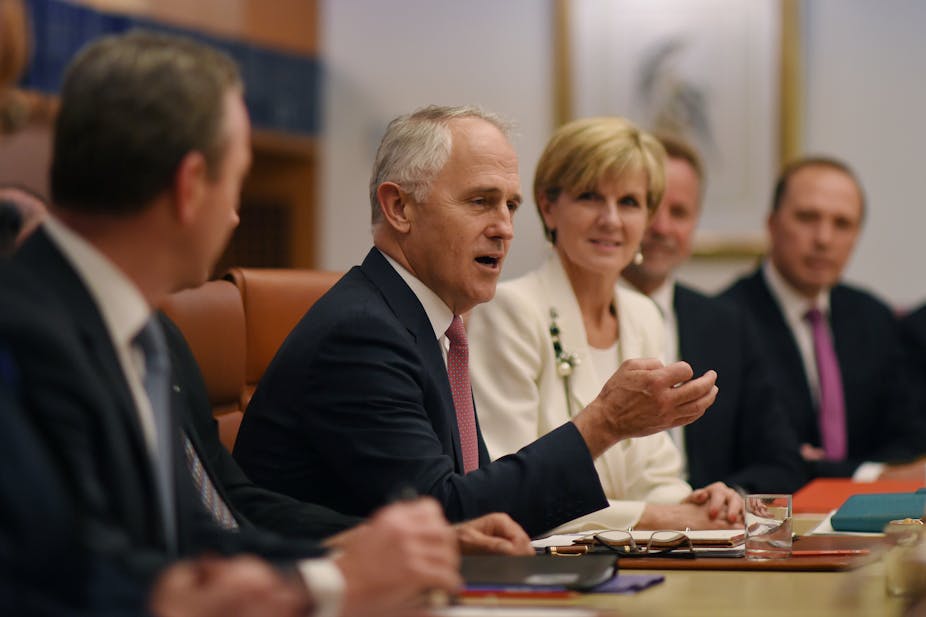Malcolm Turnbull has said his government is committed to being one “of the 21st century”. So what could that mean for education? New Education Minister Simon Birmingham, previously Christopher Pyne’s assistant minister, pledged to:
build broad support for policy reforms and a continuing commitment to reform of vocational training.
Both he and his former boss are set to take on positions at the centre of the prime minister’s innovation agenda. The fine detail of how this is to be prioritised is yet to come, but in spirit it provides some broad brushstrokes for a fresh vision for education in Australian schools and universities.
What is truly modern in education?
Consulting with the sector on policy will support the stated “21st -century approach” becoming a reality. And it may just fulfil the oft-expressed political desire of education ministers for a “truly world-class higher education system in Australia”.
Ensuring the end-game assessments of schooling don’t kill the potential for innovative learning for students is an important leap into 21st-century education. Regurgitation of facts and memorised responses pumped out by individuals in silence and isolation in an exam room is at odds with authentic 21st-century skills like collaboration and teamwork. Students need detailed and constructive feedback in real time.
For schools, teachers and parents, that might mean using the full range of education assessment measures: digital portfolios, reflection and solving real-world problems – not just using NAPLAN and PISA scores to understand student learning.
Current assessment does not involve allowing students to fail. It does not teach them the critical skill of knowing how to use information. High-stakes exams promote cramming, where information is stored in the short-term memory, reducing opportunities for knowledge retention and transfer. Studying for learning, not for exams, is crucial for 21st-century education.
What do we need to teach children for the future?
Science, technology, engineering and maths (STEM) education in schools is a key focus of both major parties, with Turnbull starting the conversation from the floor of parliament earlier this year. Computer coding is seen as the panacea to equip all students for jobs for the future. Ensuring there are enough STEM jobs when students graduate with these future–oriented skills are matters for the incoming minister to turn his attention to.
What is required in the meantime is proper funding for STEM education in schools to match the “political speak” of what the digital age requires. Coding entails serious funding for state-of-the-art computer hardware and software programs, reliable internet access for all schools and comprehensive teacher professional development.

The A$12 million announced by the former parliamentary secretary to the previous science minister was well short of what is required. TeachMeets and social media networks like #aussieEd on Twitter are excellent examples of how teachers in schools across Australia are taking the lead in personal professional development in technology-enhanced learning.
The Turnbull government must respect, acknowledge and understand these spaces. Such actions demonstrate the capacity of teachers to match the educational challenges in classrooms with what works in practice.
Moving Australian education forward
The national curriculum was reviewed last year and 30 recommendations were made for changes to the ACARA document. “Back to basics”, direct instruction, boosting phonics and strengthening references to Western influences, as recommended in the review, are at odds with current education research, 21st-century curricula and innovative, inquiry-based teaching practices.
The noted over-crowding of the primary curriculum prominent in Pyne’s 2014 review – and his gesture to do something about it on his last day in the job – will be welcomed by the profession, as was the much awaited signing off on the Digital Technologies curriculum.
The vocational education sector will be counting on the new ministry to restore vocational training to its former world-leading status. Moving childcare out of social services and back into the education portfolio is also welcomed by the sector as recognition that early learning is not just a welfare issue.
More publicly funded research would mean more innovation that can be used by business to progress the nation’s productivity. This will be on the radar of everyone in the university sector.
However, the main priority for this self-styled 21st-century government should be making equity a reality for all schools and students, as was the priority of the Gonski education reforms. Ensuring all young people from birth to university age receive the quality education they deserve would not only make them a 21st-century government, but one that could win the next election.
This article is part of a series on 21st-century government. Read other pieces in the series here.
Jane will be on hand for an Author Q&A between10 and 11am AEST on Friday, September 25, 2015. Post your questions in the comments section below.

